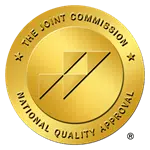Addressing the pervasive issue of substance abuse demands a comprehensive understanding and multifaceted treatment methods for substance abuse. Beyond mere experimentation, substance abuse encompasses a pattern of behavior with far-reaching effects on health, relationships, and society. In this blog post, we delve into the multifaceted nature of substance abuse, from its definition and common substances abused to its physiological and psychological impacts, contributing factors, and the relentless cycle of addiction, highlighting how integrating holistic methods offers personalized care alongside traditional approaches.
Substance Abuse: A Pervasive Phenomenon
Substance abuse, a pervasive issue affecting millions worldwide, refers to the harmful or hazardous use of psychoactive substances, including alcohol and illicit drugs.
This phenomenon extends beyond mere experimentation or occasional use; it denotes a pattern of behavior where the consumption of these substances detrimentally impacts an individual’s health, social responsibilities, and psychological well-being.

The repercussions of substance abuse are far-reaching, influencing not only the individual but also rippling through families, communities, and societies at large.
On an individual level, substance abuse can lead to a range of health problems, including but not limited to, mental health disorders, liver disease, heart problems, and an increased likelihood of accidents or injuries.
The psychological grip of addiction can disrupt personal relationships, employment, and the ability to fulfill daily responsibilities.
Moreover, the economic burden on healthcare systems, the criminal justice system, and lost productivity is immense, with societies bearing substantial direct and indirect costs.
Traditional treatment methods for substance abuse have predominantly focused on a combination of detoxification, medication, and behavioral therapy.
Detoxification involves medically supervised withdrawal from the substance, aiming to safely manage withdrawal symptoms. Medication-assisted treatment (MAT) can include drugs like methadone or buprenorphine to reduce cravings and withdrawal symptoms, or naltrexone to block the effects of opioids and alcohol.
Behavioral therapies, such as cognitive-behavioral therapy (CBT) or contingency management, focus on modifying the patient’s thinking, expectations, and behaviors while increasing skills to handle various stressors.
However, a growing body of evidence suggests that integrating holistic approaches can significantly enhance the effectiveness of substance abuse treatment.
Holistic and integrated treatment methods encompass a more comprehensive view of addiction, addressing not only the physical aspect but also the emotional, spiritual, and social facets of the individual’s life. These methods can include practices like acupuncture, yoga, meditation, and nutritional counseling, offering tools for stress management, mental clarity, and overall physical well-being.
Integrating these holistic methods with traditional treatments can offer a more personalized, multifaceted approach to addiction recovery.
By catering to the diverse needs of individuals and acknowledging the multifaceted nature of addiction, holistic and integrated treatments can potentially lead to more sustainable recovery outcomes, benefiting individuals and, by extension, society as a whole.
This approach recognizes the complexity of substance abuse and aims to address it through a more nuanced, comprehensive lens.

Understanding Substance Abuse
Let’s take a deep dive into the multifaceted nature of substance abuse, encompassing:
- Its definition
- Substances typically abused
- The wide-ranging effects on individuals
- The contributing factors
- The cycle of addiction that ensnares users.
Definition and Types of Substances Commonly Abused
Substance abuse, often interchangeable with Substance Use Disorder, is characterized by the excessive and harmful use of psychoactive substances.
These substances alter brain function, resulting in temporary changes in perception, mood, consciousness, and behavior. Commonly abused substances fall into several categories:
- Alcohol: A legal depressant, alcohol is widely abused and can lead to addiction known as alcoholism.
- Prescription Drugs: This includes opioid painkillers (like oxycodone and morphine), anti-anxiety medications (such as benzodiazepines), stimulants for attention deficit disorder, and sedatives.
- Illicit Drugs: Examples are cocaine, heroin, methamphetamine, and cannabis (though its legal status varies).
- Inhalants: Substances like glue, paint thinners, or nitrous oxide, which are inhaled for their psychoactive effects.
Psychological and Physiological Effects of Substance Abuse
The psychological and physiological impacts of substance abuse are profound and varied.
Physiologically, substances can cause a range of effects from immediate harm (like heart attack or overdose) to long-term health issues (including liver disease, heart disease, or neurological impairment). The type of substance abused dictates the specific health outcomes.
Psychologically, substance abuse can lead to a range of mental health disorders, including depression, anxiety, and psychosis. Substance use can exacerbate existing mental health issues and can even trigger new ones. The brain’s reward system is hijacked, leading to a cycle of cravings and dependency.
Factors Contributing to Substance Abuse
The causes of substance abuse is complex and multifactorial:
- Genetic Factors: Genetics can play a significant role, with a person’s genetic makeup contributing to about half of their risk for addiction.
- Environmental Factors: These include family beliefs and attitudes, exposure to a peer group that abuses substances, economic status, and general quality of life.
- Psychological Factors: Individuals with mental health disorders, past trauma, chronic stress, or a history of abuse are at higher risk of substance abuse.
The Cycle of Addiction and its Challenges
The cycle of addiction is a relentless process that encapsulates the user in a repetitive pattern of craving, using, and withdrawal. It begins with experimentation or voluntary use, which then evolves into regular use.
As tolerance develops, the user requires more of the substance to achieve the same effects, leading to dependence. Once dependence sets in, efforts to quit result in withdrawal symptoms, driving the individual back to substance use in a bid to alleviate discomfort.
Breaking this cycle is immensely challenging due to both the physiological changes in the brain and the psychological dependence that develops.
Withdrawal symptoms can range from uncomfortable to life-threatening, and psychological cravings can persist long after the physical dependence has been managed.
- Tolerance: The body’s adaptation to the substance, requiring more to achieve the same effect.
- Dependence: Physical or psychological reliance on the substance to function or feel normal.
- Withdrawal: Symptoms that occur when the substance is reduced or stopped, often the opposite of the effects the substance induces.
- Relapse: The return to substance use after an attempt to stop, often driven by lingering cravings or inability to cope with stressors without the substance.
Challenges in Overcoming Addiction
- Physical Health Issues: Addressing the physical damage caused by long-term substance abuse, managing withdrawal symptoms, and dealing with any co-occurring health issues.
- Mental Health Challenges: Many individuals with substance use disorders also struggle with mental health conditions, which can complicate treatment.
- Social and Environmental Triggers: Overcoming addiction often requires significant changes in one’s social life and environment to avoid triggers that lead to relapse.
- Stigma and Misunderstanding: Societal stigma around substance abuse can prevent individuals from seeking help or receiving adequate support from their community.
- Lack of Resources: There can be a lack of accessible, affordable, and effective treatment options for those seeking to overcome addiction.
Understanding substance abuse as a comprehensive issue requires an acknowledgment of its complexity and the multifaceted approach needed to tackle it. It’s not merely a matter of willpower; substance abuse is deeply ingrained in the biology, psychology, and environment of the individual.
Comprehensive treatment approaches, therefore, need to address all these aspects to be effective.

Substance Abuse Traditional Treatment Methods
Traditional treatment methods for substance abuse primarily revolve around three key approaches: detoxification, medication-assisted treatment (MAT), and behavioral therapy. These methods have been the cornerstone of substance abuse treatment for decades.
Detoxification: Detoxification is the initial step in many treatment programs. It involves a supervised withdrawal process, where the goal is to safely eliminate drugs or alcohol from the body. Medical supervision is crucial due to potential severe withdrawal symptoms.
Detox alone does not address the underlying behavioral aspects of addiction but is usually the first step before other treatments.
Medication-Assisted Treatment (MAT): MAT combines medication with counseling and behavioral therapies. It’s particularly effective in treating opioid addiction. Medications like methadone, buprenorphine, and naltrexone are used to reduce cravings and withdrawal symptoms.
MAT helps to normalize brain chemistry, block the euphoric effects of alcohol and opioids, and bring about a balance in body functions without the negative effects of the abused substance.
Behavioral Therapy: This treatment approach focuses on changing the behaviors related to substance abuse and addressing any underlying mental health issues. Common types include cognitive-behavioral therapy (CBT), which helps patients recognize, avoid, and cope with situations where they are most likely to use substances; and motivational interviewing, which resolves ambivalence about treatment and encourages positive behavior change.
Advantages and Limitations of Traditional Approaches
Advantages
- Structured Environment: Traditional treatment programs provide a structured environment that can be beneficial for individuals in the early stages of recovery.
- Medical Supervision: Detoxification and MAT offer medical supervision, ensuring safety and reducing the severity of withdrawal symptoms.
- Evidence-Based: These treatments are widely studied and backed by scientific evidence, making them reliable options.
- Holistic Care: Many programs combine these treatments with other services like vocational training, legal assistance, and social support.
Limitations
- One-Size-Fits-All Approach: Traditional methods may not adequately address the unique needs of every individual, particularly those with complex cases involving co-occurring disorders.
- Relapse Rates: Despite effectiveness in the short term, traditional treatments can have high relapse rates, especially if not combined with long-term behavioral therapies.
- Accessibility and Cost: Some treatments, particularly MAT, can be expensive and not easily accessible to everyone.
- Stigma: There’s often a stigma associated with some MAT medications like methadone, which can discourage individuals from seeking this form of treatment.
Outcomes of Traditional Treatments
- MAT, especially for opioid addiction, significantly reduces opioid use compared to non-medication approaches. Studies have shown that MAT increases patient survival, increases retention in treatment, and decreases illicit opiate use and other criminal activity among people with substance use disorders.
- Behavioral therapies like CBT have shown effectiveness in not only helping individuals to abstain from drug use but also in preventing relapse and treating co-occurring conditions like depression and anxiety.
- Detoxification, while effective in the short term, often requires subsequent treatment. Without follow-up care, the risk of relapse is high.
In summary, traditional treatment methods offer a foundational approach to substance abuse treatment, balancing medical and psychological care.
However, their limitations highlight the need for more personalized and integrated approaches in treating substance abuse.

Holistic Treatment Methods for Substance Abuse
In this section I discuss holistic treatment approaches for substance abuse, including their principles, types, how they address addiction, and the general evidence of their effectiveness, based on existing knowledge and research.
Definition and Principles of Holistic Treatment
Holistic treatment approaches in the context of substance abuse recovery focus on treating the individual as a whole. Unlike traditional methods that often concentrate on the physical aspects of addiction, holistic treatments aim to balance the physical, emotional, mental, and spiritual elements of an individual’s well-being.
The core principle is that all these elements are interconnected and that effective treatment must consider the entire person, not just the symptoms of addiction.
Types of Holistic Treatments
Holistic treatments encompass a wide range of non-medical practices, which can be used alongside traditional treatment methods. Common types include:
- Acupuncture: An ancient Chinese practice that involves inserting thin needles into specific points on the body. It’s used to reduce cravings and withdrawal symptoms, alleviate stress, and promote physical well-being in substance abuse patients.
- Yoga and Meditation: These practices focus on mind-body connection, stress reduction, and self-awareness. They help in managing stress and emotions, reducing cravings, and increasing self-discipline and self-awareness.
- Nutritional Therapy: Proper nutrition aids in restoring physical health, balancing neurotransmitters affected by substance abuse, and improving overall well-being.
- Art and Music Therapy: These therapies offer creative outlets for expression and emotion regulation, aiding in the healing process.
- Biofeedback and Neurofeedback: These involve using electronic monitoring to train individuals to gain control over certain bodily functions and brain activities, aiding in stress reduction and emotional regulation.
Addressing Various Aspects of Addiction
Holistic treatments address the multifaceted nature of addiction by:
- Physical Aspect: Techniques like acupuncture and nutritional therapy directly target the physical impacts of addiction, helping to detoxify the body and restore physical health.
- Emotional and Mental Aspect: Therapies like yoga, meditation, and art therapy provide tools for emotional regulation, stress management, and addressing underlying psychological issues linked to substance abuse.
- Spiritual Aspect: Many holistic practices emphasize spiritual growth and connection, helping individuals find purpose and meaning beyond substance use.
Evidence Supporting the Effectiveness of Holistic Treatments
Although holistic treatments are often considered complementary and are not always the primary line of treatment for substance abuse, there is growing evidence supporting their effectiveness:
- Acupuncture has been shown in studies to be effective in reducing cravings, irritability, anxiety and withdrawal symptoms, and in improving treatment outcomes when used alongside traditional treatments. It consists in inserting thin needles along specific body meridians.
- Exercise such as running, swimming, playing sports and working out can assist in reducing stress, increasing self-confidence and improving mood.
- Yoga has proven effective in increasing certain neurotransmitter activity in the brain, helping relieve stress and anxiety. Yoga uses breathing techniques, body postures and meditation as a pathway to physical, mental and spiritual health.
- Meditation has been found to reduce stress, anxiety, and depression, which are common triggers for substance abuse. It also enhances mindfulness, which is linked to reduced rates of substance use relapse.
- Nutritional therapy can play a crucial role in restoring physical health, improving mood and cognitive function, all of which are important in recovery from substance abuse.
- Art and music therapies have been effective in providing emotional release, improving mental health, and aiding in the development of new coping skills.
- Biofeedback and neurofeedback have shown promise in helping individuals gain better control over their physiological responses to stress and cravings.
In summary, holistic treatment approaches offer a comprehensive way of addressing the complex nature of substance abuse.
By focusing on the entire spectrum of the individual’s needs—physical, emotional, mental, and spiritual—these methods can enhance recovery and provide tools for long-term sobriety and well-being.

Integrated Treatment Models
Integrated treatment models for substance abuse represent a progressive approach that combines elements of both traditional and holistic methods to create a comprehensive, multifaceted treatment plan.
This approach acknowledges that substance abuse is a complex issue, often intertwined with various physical, psychological, and social factors, necessitating a treatment strategy that addresses all these elements concurrently.
What Are Integrated Treatment Models?
Integrated treatment models are designed to provide a seamless combination of services and therapies to address the myriad aspects of substance abuse and its related conditions.
This approach typically blends traditional medical treatments, such as medication-assisted therapy (MAT) and detoxification, with psychological therapies like cognitive-behavioral therapy (CBT), and holistic methods, including yoga, meditation, and nutritional counseling.
The primary goal of these models is to treat the whole person, rather than focusing on one aspect of their addiction or health.
Combining Traditional and Holistic Approaches
Integrated treatment models are unique in their inclusivity of various treatment modalities. They recognize the importance of medically supervised detoxification and MAT in managing the physical symptoms of addiction and withdrawal.
Concurrently, they emphasize the value of behavioral therapies in addressing the psychological dimensions of addiction, such as trauma, mental health disorders, and behavioral patterns associated with substance use.
Holistic treatments are incorporated to support the overall well-being of the individual. Practices like meditation and yoga are used to help manage stress, enhance mindfulness, and foster a greater sense of physical and emotional balance.
Nutritional therapy ensures the body receives the necessary nutrients to recover and maintain health, while alternative therapies like acupuncture might be used to alleviate discomfort and cravings.
Benefits of Integrated Treatment Models
The advantages of integrated treatment models in addressing substance abuse are significant:
- Comprehensive Care: By addressing the physical, psychological, and emotional needs of individuals, integrated models offer a more thorough approach to treatment, which can lead to better outcomes.
- Personalized Treatment: These models allow for greater flexibility and personalization, catering to the unique needs of each individual.
- Improved Engagement: The variety of therapies and approaches can improve patient engagement and satisfaction, as individuals are more likely to resonate with certain aspects of their treatment plan.
- Reduced Relapse Rates: Integrated models, by addressing the root causes and broader aspects of addiction, can contribute to lower relapse rates.
- Co-occurring Disorders: They are particularly effective in treating individuals with co-occurring disorders, offering simultaneous treatment for substance abuse and mental health issues.
Benefits of A Comprehensive Integrated Approach
Integrated treatment models represent a shift towards a more holistic understanding of substance abuse. By recognizing the multifaceted nature of addiction and
and combining various treatment methodologies, these models provide a more comprehensive and effective approach to recovery.
They not only address the immediate symptoms of substance abuse but also aim to resolve underlying issues and promote long-term well-being and sobriety.
Personalized Approach
The success of integrated models lies in their flexibility and adaptability. They can be tailored to meet the diverse needs of individuals, taking into account their unique circumstances, preferences, and health requirements.
This personalized approach is crucial in substance abuse treatment, where one size does not fit all. The integration of various therapies ensures that all aspects of an individual’s life are considered and treated, from physical health and psychological well-being to emotional balance and social functioning.
Treatment for Co-occurring Disorders
Another key benefit of integrated treatment models is their ability to effectively treat individuals with co-occurring disorders. Many people with substance abuse issues also suffer from mental health disorders such as depression, anxiety, or post-traumatic stress disorder (PTSD).
Integrated models offer concurrent treatment for these conditions, which is essential for effective recovery. By treating both the substance abuse and the co-occurring disorder, these models help to reduce the risk of relapse and improve overall outcomes.
Cost Reduction
The impact of integrated treatment models extends beyond individual recovery. By providing more effective and comprehensive care, these models can reduce the long-term costs associated with substance abuse, including healthcare costs, lost productivity, and social services. They also contribute to the well-being of families and communities, as individuals in recovery can lead healthier, more productive lives.
Challenges
However, implementing integrated treatment models can be challenging. It requires coordination between different healthcare providers and specialists, as well as a commitment to a holistic approach to treatment.
Funding and resources are also crucial, as these models can be more costly and resource-intensive than traditional methods. Despite these challenges, the potential benefits of integrated treatment models make them an essential component of substance abuse treatment.
In summary, integrated treatment models represent a significant advancement in the treatment of substance abuse. By combining traditional and holistic approaches, they offer a more complete and effective solution to a complex and multifaceted issue.
As these models continue to evolve and improve, they hold great promise for helping individuals overcome addiction and lead healthier, more fulfilling lives.

Success Stories
These stories reflect a composite of common experiences and outcomes seen in holistic and integrated treatment settings.
Mike’s Story: Combating Alcoholism with Integrated Treatment
Background: Mike, 45, struggled with alcoholism for over 20 years. His addiction severely impacted his family life and career.
Treatment Approach: Mike’s treatment involved a combination of medically supervised detox, cognitive-behavioral therapy (CBT), and regular yoga sessions.
Outcome: The detox effectively managed his physical withdrawal symptoms, while CBT helped him understand and change his thought patterns related to alcohol use. Yoga provided him with a healthy way to manage stress and anxiety.
Long-term Effects: Two years post-treatment, Mike reports significant improvements in his family relationships and job performance. He continues practicing yoga and attends weekly support group meetings.
Quote from Mike: “The integrated approach helped me tackle my addiction from all angles. Yoga was something I never thought I’d do, but it’s been essential for my mental health.”
Emma’s Story: Overcoming Opioid Addiction with Holistic Healing
Background: Emma, 32, became addicted to opioids following a prescription for pain management.
Treatment Approach: Emma’s treatment plan included medication-assisted treatment (MAT) using buprenorphine, along with acupuncture and nutritional therapy.
Outcome: MAT helped control cravings and withdrawal, acupuncture alleviated pain and helped reduce stress, and nutritional therapy improved her overall physical health.
Long-term Effects: A year later, Emma is opioid-free and has returned to work. She has also adopted a healthier lifestyle and diet.
Quote from Healthcare Professional: “Emma’s commitment to a holistic approach was key. It not only helped with her addiction but improved her overall well-being.”
Andy’s Story: Addressing Methamphetamine Addiction with an Integrated Approach
Background: Andy, 27, struggled with methamphetamine addiction, leading to severe health and legal issues.
Treatment Approach: His treatment combined traditional psychotherapy, group therapy, and art therapy as a holistic component.
Outcome: Psychotherapy addressed his addiction and underlying mental health issues, group therapy provided peer support, and art therapy offered a creative outlet for expression and coping.
Long-term Effects: Andy has been sober for 18 months and has become an advocate for art therapy in addiction recovery.
Quote from Andy: “Art therapy opened a new world for me. It was therapeutic in ways I can’t describe with words. It’s a big part of why I’m still sober.”
Sarah’s Story: Healing from Cocaine Addiction through Mindfulness and Traditional Therapy
Background: Sarah, 40, faced cocaine addiction that affected her professional life and personal relationships.
Treatment Approach: Sarah’s recovery program included traditional behavioral therapy and mindfulness meditation.
Outcome: Behavioral therapy helped her identify triggers and develop coping strategies, while mindfulness meditation improved her self-awareness and ability to manage cravings.
Long-term Effects: Now three years sober, Sarah continues to use mindfulness techniques daily and has become a mentor for others in recovery.
Quote from Sarah: “Mindfulness changed how I react to life’s stresses. It’s not just about staying away from cocaine; it’s about living a life I don’t want to escape from.”
Analysis of Treatment Outcomes and Long-Term Effects
In these stories, the integration of holistic and traditional therapies provided a comprehensive approach to treating substance abuse. The outcomes show significant improvements in physical health, mental well-being, and social functioning.
Holistic treatments like yoga, acupuncture, and art therapy offered alternative ways to manage stress, pain, and emotions, which are crucial in recovery and relapse prevention.
Traditional therapies, including medication-assisted treatment and psychotherapy, addressed the physiological aspects of addiction and the underlying psychological factors.
The long-term effects observed in these cases highlight the sustainability of recovery when a multifaceted approach is used. A study by Wusthoff et al has shown that integrated treatment is effective in increasing the motivation for treatment amongst patients with anxiety and/or depression together with Substance Use Disorder in outpatient clinics.
Another study (Priddy et al) reported that scientific findings indicate that Substance Use Disorders (SUDs) are driven by dysregulation of neural processes underlying reward learning and executive functioning. Emerging evidence suggests that mindfulness training can target these neurocognitive mechanisms to produce significant therapeutic effects on SUDs and prevent relapse.
Participants not only achieved sobriety but also developed healthier lifestyles and coping mechanisms that benefited their overall quality of life. The incorporation of practices like yoga, mindfulness, and art into their daily routines provided ongoing support beyond the initial treatment period.
Moreover, these stories underscore the importance of personalizing treatment plans. Each individual’s journey through addiction and recovery is unique, and what works for one person may not work for another. The flexibility to incorporate various therapies according to personal preferences and needs appears to be a key factor in the success of these treatment models.
Reflections from Healthcare Professionals and Patients
Healthcare professionals observed that patients who engaged in holistic practices alongside traditional treatments often showed greater improvements in mental health, motivation, and overall engagement with the treatment process.
They noted that holistic therapies could bridge the gap between physical treatment and mental healing, offering a more rounded approach to recovery.
Patients, on the other hand, expressed that the inclusion of holistic practices in their treatment plans provided them with new perspectives and tools for managing their addiction. They felt that these practices helped them connect with aspects of their well-being that had been neglected or damaged by their substance abuse.
Summary
These stories demonstrate the potential effectiveness of integrated treatment models in substance abuse recovery. By combining traditional and holistic approaches, these models address the multifaceted nature of addiction, offering a more personalized and comprehensive path to recovery.
The success stories of individuals like Mike, Emma, Andy and Sarah highlight the transformative power of an approach that respects and nurtures the whole person—body, mind, and spirit.

Challenges and Considerations
Implementing holistic and integrated treatments for substance abuse presents a unique set of challenges and considerations. These encompass financial, cultural, ethical, and practical aspects, as well as the crucial role of support systems like family and community. Addressing these challenges is key to ensuring the effectiveness and accessibility of these treatment modalities.
Challenges in Implementing Holistic and Integrated Treatments
Cost and Accessibility: One of the primary challenges is the cost associated with holistic treatments, which are often not covered by insurance. This can make them inaccessible to many who need them.
Additionally, integrated treatment programs, which combine various methods, can be more expensive due to the need for diverse specialists and resources. Geographical limitations also affect accessibility, as such treatments may not be available in all areas, particularly in rural or underserved communities.
Cultural Perceptions: Cultural perceptions and stigma surrounding certain treatment methods can hinder their acceptance and utilization. For example, practices like acupuncture or meditation may be viewed skeptically by individuals from cultures that traditionally rely on more conventional medical treatments.
Similarly, there’s often stigma associated with seeking treatment for substance abuse, which can prevent individuals from accessing any form of treatment.
Training and Expertise: Implementing integrated treatment models requires professionals who are not only trained in conventional medical and psychological approaches but also in various holistic practices. Finding and training such diverse professionals can be a significant challenge.
Standardization and Regulation: Holistic therapies vary greatly in approach and execution. The lack of standardization can make it difficult to assess their quality and effectiveness. Additionally, regulation of these therapies is often less stringent than for conventional medical practices, raising questions about safety and efficacy.
Ethical and Practical Considerations in Treatment Planning
Individualized Care: Ethically, it’s crucial to ensure that treatment plans are tailored to the individual needs and backgrounds of patients. This requires a thorough understanding of their medical history, cultural background, and personal preferences.
Informed Consent: Patients must be given comprehensive information about all aspects of their treatment, including potential risks and benefits of holistic practices, to make informed decisions.
Monitoring and Evaluation: Continuous monitoring of treatment effectiveness and patient progress is essential. This involves practical considerations in terms of resources for tracking and evaluating various treatment modalities.
Integration of Care: Practically, coordinating different aspects of integrated treatment models—such as synchronizing holistic practices with medical treatments and ensuring they complement rather than conflict with each other—requires careful planning and communication among healthcare providers.
Adjusting Treatment Plans: Treatment plans may need to be adjusted over time, requiring flexibility and ongoing assessment to determine the most effective combinations of therapies for individual patients.
The Role of Support Systems in Holistic and Integrated Approaches
Family Involvement: Family can play a crucial role in the success of holistic and integrated treatment approaches. Family members can provide emotional support, help in maintaining a stable environment, and reinforce the practices and lifestyle changes initiated in treatment.
In some treatment models, family therapy is integrated to address relational issues and improve the support system around the patient.
Community Support: Community resources and support groups are also vital. They offer a sense of belonging, shared experiences, and ongoing support that can be crucial for long-term recovery. Community programs can also provide education, reduce stigma, and offer additional resources like employment assistance or social activities that support a sober lifestyle.
Peer Support: Peer support groups, such as those found in 12-step programs or other recovery communities, provide a level of understanding and empathy that can be particularly impactful. These groups often incorporate holistic principles like mindfulness and self-reflection, enhancing the overall treatment approach.
Integrating Support Systems into Treatment: For holistic and integrated treatments to be most effective, it’s essential that these support systems are not only available but also actively integrated into the treatment plan. This might involve coordinating with community services, involving family members in therapy sessions, or encouraging participation in peer support groups.
Summary
The implementation of holistic and integrated treatments for substance abuse, while promising, comes with its own set of challenges and considerations. Addressing these effectively requires a coordinated effort among healthcare providers, patients, families, and communities.
It also calls for a flexible, culturally sensitive approach to treatment planning and delivery. By navigating these complexities carefully, the potential of holistic and integrated treatments to offer more comprehensive and effective care for individuals struggling with substance abuse can be fully realized.

Future of Substance Abuse Treatment
The future of substance abuse treatment is poised for transformative change, driven by emerging trends in holistic and integrated treatment methods, the growing influence of technology and innovation, and evolving policy and healthcare landscapes.
These developments promise to enhance the efficacy, accessibility, and personalization of treatment for substance abuse, offering hope for more effective recovery strategies.
Emerging Trends in Holistic and Integrated Treatment Methods
The shift towards holistic and integrated treatment methods is gaining momentum. This approach, which considers the entire spectrum of an individual’s needs—physical, mental, emotional, and spiritual—is increasingly being recognized for its effectiveness.
Holistic methods such as mindfulness practices, yoga, and acupuncture are being integrated into more traditional treatment plans, offering a comprehensive approach to recovery.
Personalized Medicine
One significant trend is the increasing focus on personalized medicine in addiction treatment. This involves tailoring treatment plans based on individual genetic makeup, environmental factors, and personal history. Such customization can significantly improve treatment outcomes by addressing the unique underlying factors contributing to each individual’s substance abuse.
Co-occurring Disorders Treatment
Furthermore, there’s a growing recognition of the importance of treating co-occurring disorders alongside substance abuse. Integrated treatment models that address both mental health issues and substance abuse simultaneously are becoming more prevalent, reflecting a more nuanced understanding of the complexities of addiction.
The Potential Impact of Technology and Innovation in Treatment Approaches
Technology is set to play a pivotal role in the evolution of substance abuse treatment. Digital tools like mobile apps for addiction management and recovery support are already popular, offering resources like tracking tools, therapeutic exercises, and access to online support communities. Virtual reality (VR) is another emerging tool, with potential applications
in exposure therapy, where patients can confront and learn to cope with triggers in a controlled, virtual environment.
Telemedicine
Telemedicine is another innovation revolutionizing treatment accessibility. It allows individuals to access counseling and psychiatric services remotely, making treatment more accessible, especially in rural or underserved areas. Additionally, telemedicine can facilitate continuous monitoring and support, which is crucial for long-term recovery.
Wearable Technology
Wearable technology, capable of monitoring physiological markers like stress levels or even predicting potential relapse based on behavioral patterns, is another promising frontier. Such advancements can provide real-time feedback and intervention, significantly aiding relapse prevention strategies.
Artificial Intelligence
Artificial Intelligence (AI) and machine learning are also starting to play a role in substance abuse treatment. They can analyze vast amounts of data to identify trends, predict outcomes, and even customize treatment plans based on predictive analytics. This can lead to more effective, data-driven treatment strategies.
Influence of Policy and Healthcare Changes on Adoption of Methods
Policy and healthcare system changes are critical to the widespread adoption and success of innovative substance abuse treatments.
Insurance coverage and reimbursement policies, in particular, can greatly influence the accessibility of holistic and integrated treatment methods. Expanded coverage for these treatments would make them more accessible to a broader population.
Healthcare policies that promote a holistic and integrated approach to substance abuse treatment are crucial. For instance, policies encouraging the collaboration between mental health professionals, addiction specialists, and primary care providers can facilitate a more cohesive and effective treatment approach.
Regulations and guidelines around new technologies in healthcare, such as telemedicine and AI, will also shape how these innovations are integrated into substance abuse treatment. Ensuring these technologies are used ethically and effectively while protecting patient privacy is paramount.
Additionally, the role of government and non-profit organizations in funding research and pilot programs for innovative treatments cannot be overstated. Such support is essential for the continued development and testing of new treatment modalities.
Summary
The future of substance abuse treatment methods is on the cusp of significant evolution, buoyed by advancements in holistic and integrated treatment methods, technology, and supportive healthcare policies.
These developments promise to enhance the precision, efficacy, and accessibility of treatments, offering new hope and more effective pathways for recovery. As the field continues to evolve, it will be crucial to balance innovation with ethical considerations, ensuring that new treatments are not only effective but also equitable and accessible to all who need them. If you or a loved one is seeking help, consider exploring the comprehensive drug treatment offered by The Encino Detox Center. Our commitment to holistic and integrated approaches may provide the support needed for a transformative journey towards recovery.

Key Takeaways
- Holistic and integrated treatment methods encompass a more comprehensive view of addiction, addressing not only the physical aspect but also the emotional, spiritual, and social facets of the individual’s life.
- The cycle of addiction is a relentless process that encapsulates the user in a repetitive pattern of craving, using, and withdrawal. It begins with experimentation or voluntary use, which then evolves into regular use.
- Traditional treatment methods for substance abuse primarily revolve around three key approaches: detoxification, medication-assisted treatment (MAT), and behavioral therapy.
- The limitations of traditional approaches highlight the need for more personalized and integrated approaches in treating substance abuse.
- Holistic treatments aim to balance the physical, emotional, mental, and spiritual elements of an individual’s well-being.
- By focusing on the entire spectrum of the individual’s needs—physical, emotional, mental, and spiritual—these methods can enhance recovery and provide tools for long-term sobriety and well-being.
- Integrated treatment methods for substance abuse represent a progressive approach that combines elements of both traditional and holistic methods to create a comprehensive, multifaceted treatment plan.
- Implementing integrated treatment models can be challenging. These encompass financial, cultural, ethical, and practical aspects, as well as the crucial role of support systems like family and community.
- The future of substance abuse treatment is poised for transformative change, driven by emerging trends in holistic and integrated treatment methods, the growing influence of technology and innovation, and evolving policy and healthcare landscapes.

Sources
Gonzales, M. 2020. Holistic Treatment. DrugRehab.com
Kelly, M. T and Daley, D.C. 2013. Integrated Treatment of Substance Use and Psychiatric Disorders. Soc Work Public Health. 2013; 28(0): 388–406.
Doi: 10.1080/19371918.2013.774673
Priddy, S. et al. 2018. Mindfulness meditation in the treatment of substance use disorders and preventing future relapse: neurocognitive mechanisms and clinical implications. Subst Abuse Rehabil. 2018; 9: 103–114.Published online 2018 Nov 16. doi: 10.2147/SAR.S145201Wusthoff, L. E., 2104. The effectiveness of integrated treatment in patients with substance use disorders co-occurring with anxiety and/or depression – a group randomized trial. BMC Psychiatry. 2014; 14: 67. Published online 2014 Mar 5. doi: 10.1186/1471-244X-14-67


















